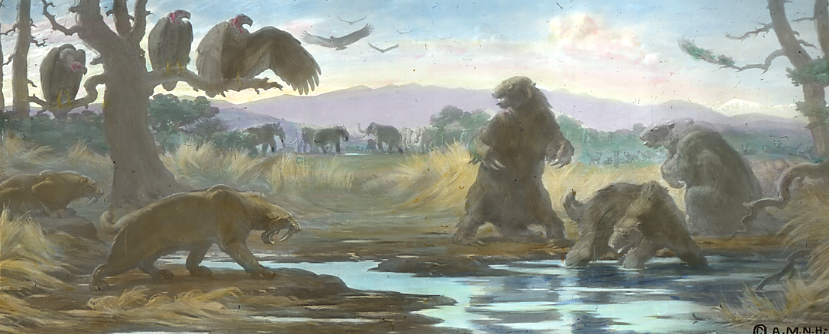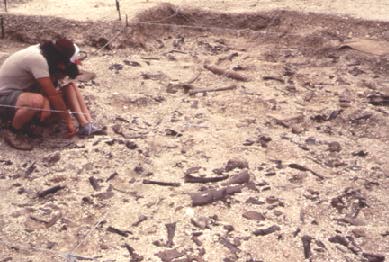Most recent forms of mammals evolved during the Pleistocene Epoch. A dramatic “event” of this time period was the last “Ice Age.”

The Pleistocene Epoch also was the last time that a great diversity of mammals lived in North America, including mammoths, mastodons, giant sloths, several llama-like camels, and tapirs. And it was the last epoch native horses lived in North America. The horses were both abundant and diverse.
Numerous Pleistocene localities exist throughout North America, most famously the La Brea Tar Pits in Los Angeles, which was discovered accidentally while workers were mining asphalt.

Charles Knight painted a reconstruction of a tar pit as it might have appeared 40,000 years ago. Saber-tooth cats confront a giant ground sloth, while mastodons feed in the open savanna in the background.

The Leisey Shell Pit near Tampa, Florida, is an older Pleistocene locality that has produced thousands of fossil specimens, including many from the modern Equus genus.
Continental ice sheets, a type of glacier, advanced and retreated throughout the Ice Age. At various times this ice extended down into the northern regions of the United States. New York, New England, and the northern Midwest retain evidence from these fairly recent glaciers.
The end of the Pleistocene is marked by the extinction of horses and many other large mammals in North America. Some of the animals that died out in North America survived in other regions. For example, llamas survived in South America and tapirs survived in Asia and South America. Two elephant genera survive in the Old World, in Africa and India, but all the mammoths and mastodons became extinct.
Horses that lived during the Pleistocene:
Back to Time Scales Back to Horse Gallery
Banner illustration by Mauricio Anton. Originally published in PLoS Biology in the article “What Killed the Woolly Mammoth?” by Caitlin Sedwick (1 April 2008).